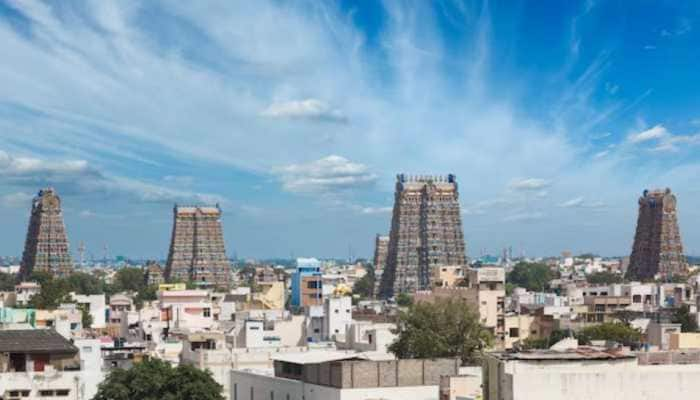Manipur Riots – What Caused Divide Between The Communities?
Today there are allegations on the state government for sponsoring the ethnic cleansing of Kuki-Zo minorities and at the same time Meitei community floating narratives like drug business, illegal infiltration etc against the Kuki-Zo.
Trending Photos
)
Manipur is known for many reasons. Firstly because of the outstanding sportsperson it produced and second because of terrorism. Being a remote state, the news from Manipur rarely makes a headline in the national media but the recent riots between majority Meitei population and minority Kuki-Zo population is making us think as to where things went wrong. Manipur carries a rich history of over eight centuries where the ancient Kangleipak kingdom was spread up to Irrawaddy River in Myanmar and after the independence of Burma (now Myanmar) the boundaries were confined to what we see now. Manipur saw intense bloodshed during the second world war when Netaji Subhash Chandra Bose led Indian National Army was fighting its battles all along the historical “Tiddim Road” and it was the very road where more blood was shed on 03rd May 2023 when riots started.
Today there are allegations on the state government for sponsoring the ethnic cleansing of Kuki-Zo minorities and at the same time Meitei community floating narratives like drug business, illegal infiltration etc against the Kuki-Zo. In the past, it was Meitei community which has been effectively ruling over the state. Initially it was ruled by the Manipur royal family and later when it became an independent state, Meitei dominance continued. Surprisingly, if we leave Rishang Keishing and Yangmaso Shaiza, all the Chief Ministers of Manipur since the grant of statehood in 1963 have been from Meitei community. They are dominating in everything - government jobs, development or welfare schemes from government or anything else which has irked the hill tribes to large extent. As a result, there has been a never-ending divide created between the tribals and Meitei community which was one of the prime reasons of recent riots. There are certain aspects which needs to be analyzed when we wish to see a holistic perspective of events. Let us discuss it in six quick points-
1. Hill tribes were ignored for long –
Due to constant Meitei rule in Manipur, the hill tribes like Naga or Kuki-Zo were constantly ignored. This is evident from the fact that even today all the hill districts are devoid of higher education, specialty hospitals, Sports centers, or any other type of development and everything is centralized in valley area. Another factor related to poor development was lack of infrastructure in hills which created a rift between tribals vs non tribals. This also led to creation of various tribal social groups which started organizing tribals under their banner. At the same time, problem of terrorism created another issue. As the operations of Indian Army started against the valley-based terrorists, these terrorists moved to hill area and established their camps in the vicinity of Kuki-Zo villages. When these villages were subjected to military operations, the divide further increased.
2. Lack of living space and arable land for Meitei’s-
Since Meitei’s are confined to valley area which is barely 15% of the entire state, they faced serious issues like lack of living space and arable land. Their dilemma is that they cannot go to hills due to forest acts but people from tribal communities can freely come to valley and settle down. Valley became a place where Kuki-Zo, Naga and other tribals moved freely in search of education and better career opportunities, but Meitei people had no option but to stay here. This has created a kind of population explosion in the valley area. Meitei people wanted land and tribals wanted development but none of the wishes could be completed. This was the reason why a section of Meitei people started advocating of their inclusion in Scheduled Tribes (STs) to go and settle down in hills. When protested by tribals, it created a divide which was taken as an opportunity by the nexus of political leaders and terrorists to create unrest in the state.
3. Politico- terrorist syndicate–
Till two decades back, valley-based terrorist groups were openly operating in the state, established their own “Liberated Zones” within Manipur and formed a very strong nexus with political leaders. This politico-terrorist syndicate has been existing for over three decades where politicians arrange money and protection for their terrorist friends and terrorist groups help them winning elections. In this entire nexus, a common person is stuck like an insect in a spiderweb. On one hand he is paying taxes to the terrorists while on the other hand, is compelled to vote against the wish to the candidate sponsored by terror groups. While all this is happening, social leaders and politicians blame the tribal community all the wrongdoing thus causing divide.
4. Frequent blockades by hill tribes –
Since valley area in Manipur is surrounded by hills, all the supply lines cross through these mountains where tribals reside. In past few decades, Manipur has faced some of the worst economic blockades by tribal groups over meagre issues. Sometimes there are Kuki-Zo groups and sometimes there are Naga groups who are stopping all kind of supplies to valley for flimsy reasons. Some of these blockades continued for several months and made the lives of Meitei people hell. Under such circumstances, it is but obvious for the Meitei community to develop a hatred towards tribals and exactly that’s what has happened. Politicians and extremist groups took advantages of this hatred and made common Meitei stand against tribals while they themselves were clapping from the far.
5. Suspected role of the military junta of Myanmar -
There is a saying that “if there are turbulences in your neighborhood, you are also affected”. One of the major factors of the current turbulences is the military rule in Myanmar where Myanmar military is fighting a battle with People’s Defence Force (PDF). A large composition of this PDF is from Kuki-Chin community which are often aided by the Kuki people on this side of the border too due to their tribal affinity. The relationship of Tatmadaw with valley-based terrorist groups belonging to Meitei community is not hidden from anyone as they are not only openly harboring the terrorists but also facilitating their camps in the vicinity of Myanmar Army bases. Since Tatmadaw cannot operate in Indian territory, they might have thought of using these terrorist groups and their political mentors to teach a lesson to the Kuki-Zo tribals. Although this is still a thought process but many analysts and experts on Manipur have expressed that they do not deny the role of Tatmadaw in present riots.
6. The Chinese perspective –
India is developing its footprints in the east at a fast pace. The ambitious India-Myanmar-Thailand road project is on the verge of completion and can be launched anytime. We know very well that ASEAN countries are a major captive market for China where it does not face any kind of opposition. In the event of this highway being operational, cheap goods from India and Bangladesh will be able to reach this market which will be detrimental to Chinese business interests. But China has an option where they can temporarily halt this progress by creating unrest in Manipur through which this highway passes and there are high possibilities that the politico- terror syndicate of Manipur might have been funded by China in order to stop Indian progress. The way extremist groups like “Arambai Tenggol & Meetei Leepun” organized themselves, carried out training and equipped themselves is not possible without large scale funding which could have come either from an external country or crowdfunded locally. And once funded, it is not difficult for these leaders to instigate common Meitei population against tribals and create a situation of civil war. While the blood of innocent Manipuri Meitei’s and tribals continue to shed in the hill state, there are larger perspectives which needs to be analyzed. The reasons for the hatred between communities are not just social or religious, these could be external too. The need of the hour is to work out on these reasons and cover the gaps. Both Meitei’s and tribals have to stay in same Manipur and neither of them can go out to settle anywhere. Land belongs to both of them and at this point of time, there should not be any room for hatred.
Stay informed on all the latest news, real-time breaking news updates, and follow all the important headlines in india news and world News on Zee News.
Live Tv







)
)
)
)
)
)
)
)
)
)
